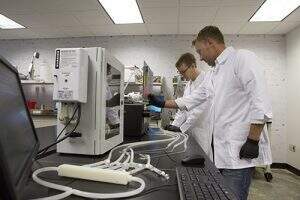Particulate Matter Spiking and Recovery
Medical Device Testing
 In an earlier blog post, we identified the top three challenges for performing particulate testing: acceptance criteria creation and justification, physiologic model development and justification and method validation. In this post, we expand on test method validation and considerations for spiking and recovery within a model.
In an earlier blog post, we identified the top three challenges for performing particulate testing: acceptance criteria creation and justification, physiologic model development and justification and method validation. In this post, we expand on test method validation and considerations for spiking and recovery within a model.
There are multiple safety concerns or risks for patients who undergo a minimally invasive procedure. One of the risks to mitigate is the number and size of the particulates associated with devices used in these procedures. FDA has repeatedly emphasized the importance of evaluation and characterization of particulate generated by devices. Over the years, MED has been involved with development of the FDA guidance for testing stents and associated delivery systems and our team continues to be active in updates to related standards such as AAMI TIR:42 and ASTM F2743.
It is critical that particulate testing be performed in a validated simulated use model. The aim of testing is to provide an accurate count of particle sizes released during simulated use. One strategy for ensuring accurate particulate characterization is through a spiking and recovery validation study.
Multiple approaches may be employed for particulate test method validation. It is important to have a known standard that satisfies the needs for uncertainty calculations, operator competence and training, and process monitoring to ensure the test setup is working as planned. We rely on NIST traceable spheres of various sizes, an inline particulate counter, and filters to collect particles of a known size and distribution. In conjunction with a robust quality system, the end result is a method validation capable of accurately counting and sizing particulate.
Unfortunately, realizing the importance of particulate counting and sizing validation comes too late, often after completed design verification testing. We would like to help you understand your spiking and recovery validation and be ready to answer questions from regulators. Understanding industry and regulatory expectations in relation to particulate spiking and recovery is one example of our ‘do it right the first time’ approach to medical device development. That approach and our ISO/IEC 17025:2017 accreditation have been invaluable when performing any device testing for our clients.
To learn more about our services and how we can partner with you, please contact us today 855.463.1633 | askmed@medinstitute.com | medinstitute.com.
Get email about news, services, and events from MED Institute.
OUR COMMITMENT
We are committed to consistently performing services with high quality, that deliver exceptional results, and add value to the client’s business.
For client surveys sent in 2024, we received ratings of 4.98/5 points (13).

